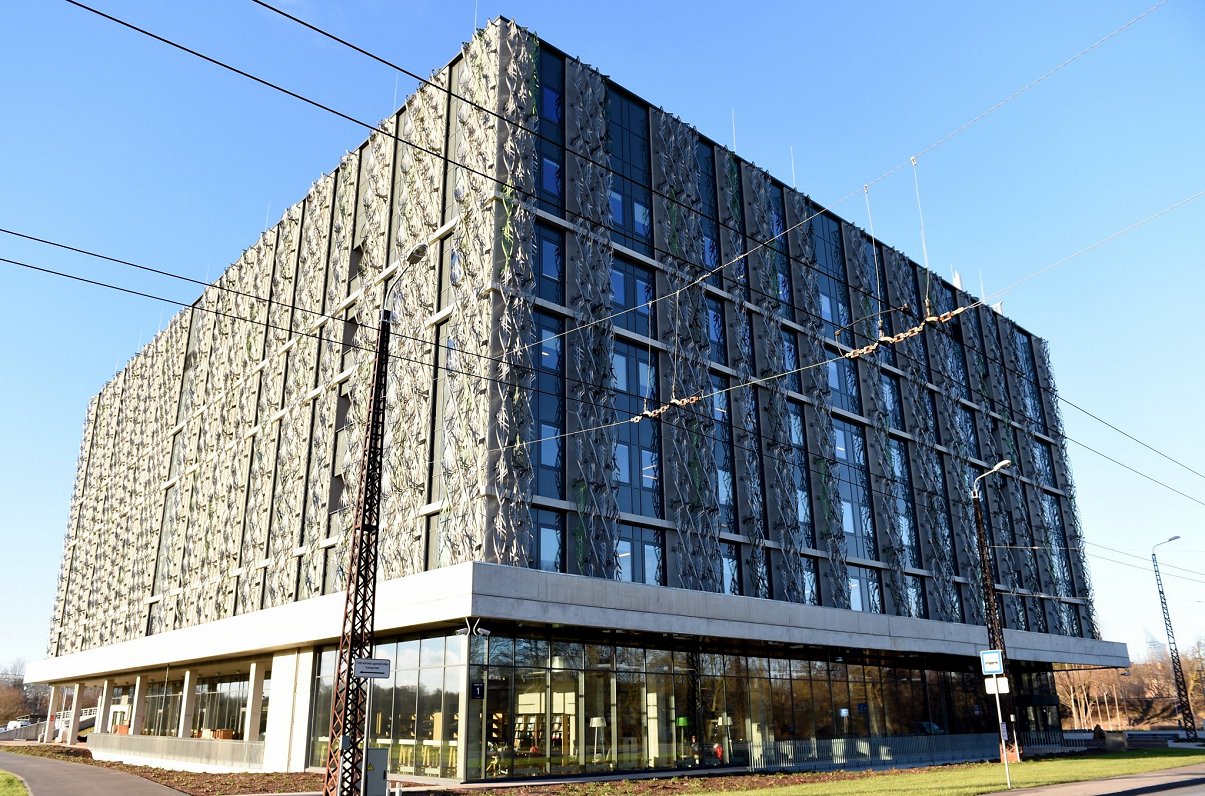The development of the LU Academic Center in Torņakalns began 10 years ago, when a contract for the construction of the House of Nature was signed. The House of Sciences was then built. Over the next four years, LU intends to double the development speed in terms of both the number of buildings and the level of investment. The rector of LU, Indriķis Muižnieks, said that the idea of setting up an academic center was old.
"A new place for university has been sought since the 1970s because of the fragmented, old, unsuitable buildings. It was clear at the time that this could not last for long. The Polytechnic Institute, now Rīga Technical University, found a place in Ķīpsala. The search for LU was extensive and varied, from Kleisti to Rumbula," said Muižnieks.
"Torņakalns proved optimal in this respect, because it is actually the center of Rīga, also thinking about the development of Rail Baltica, which was already highlighted at the time. A particularly convenient connection will be the pedestrian and cycling bridge with the Rīga Central Station. Literally a five-minute walk. There are opportunities to use the Tornakalns station in the future. Similarly, close proximity to the Latvian National Library building is important," said Muižnieks.
Next year, the House of Letters is scheduled to be unveiled in Torņakalns. Some of the old LU buildings will be rented out, some sold.
How could the Academic Center affect Torņakalns?
City planner Nils Balgalis said that the creation of campus towns on urban outskirts is a common practice in many parts of Europe, but there are a number of prerequisites that their presence in a given neighborhood would also benefit or be a significant development push. Buildings in a neighborhood are not enough to achieve this. Balgalis recalled the promises when the construction of the National Library of Latvia was planned.
"The library will give us a big push for the development of the left coast. Real estate prices will rise. It should be understood that these impulses arise not only by building an object but by establishing good public outdoor and convenient transport connections. And this is a homework that hasn't been completed entirely in the case of the library. And from that, we will have to learn that, in addition to building a university, we need to focus on convenient connections for public transport and a public outdoors that is lovely, walkable, and compatible. Then it all works well. One anchor object, if it is not supported by investment, will not work so well," said Balgalis.
Market analyst Ksenija Ijevleva of the estate agency Latio is of a similar opinion. She said the National Library of Latvia is an excellent example to mention in order to avoid errors in the future. She said that a new layer of people could come to Torņakalns in the future.
“We already have neighborhoods in Rīga that change their social and cultural importance, and Torņakalns could certainly be one of those neighborhoods. For example, Āgenskalns, which is also a historic district, but we saw how it developed in recent years, attracted young people, and real estate prices soared. And I think Thornakalna could have such a bright future,” Ijevleva said, adding that it is on condition that not only the university's Academic Center will be developed, but also the surrounding infrastructure.





























